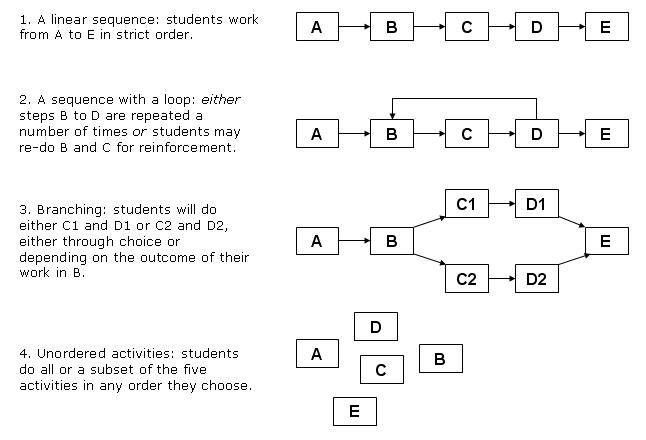About Learning Activities and Sequences
Definition
A learning activity has been defined as:
| "an interaction between a learner or learners and an environment (optionally including content resources, tools and instruments, computer systems and services, 'real world' events and objects) that is carried out in response to a task with an intended learning outcome." (Beetham, 2004) |
There may be only one activity in a particular learning session, or there may be a sequence of activities. The exact number depends on a number of inter-related factors, including:
- The length allowed for the session in the course timetable
- The nature of the content, concepts and/or skills to be learned
- The different techniques that may be appropriate to the content, concepts and/or skills
- The amount of time you expect each activity to take.
Activity types
We have suggested a number of different activities that you might need to design for a particular learning session:
- Preparation activities to be done before the session
- The sequence of activities that make up the learning session itself
- Assessment activities to ensure that students have achieved the intended learning outcomes
- Follow-up activities: non-assessed activities that you might want the students to do afterwards
- Additional activities, such as extension activities for more able students and reinforcement activities for students who may have difficulty with particular aspects of the material
- Alternative activities that might be needed in case of unforeseen circumstances
Sequence structures
You can organise the activities in a sequence in different ways, depending on the nature of the subject matter, students’ capabilities and preferences, and your teaching approach. The following diagram illustrates a number of possible structures:

